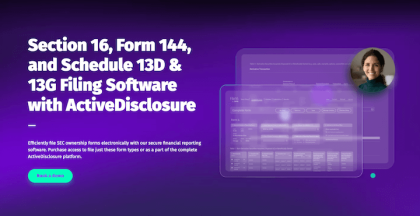Form 144 is a special form that must be filed with the Securities and Exchange Commission (SEC) when an individual who owns unregistered shares plans to sell these shares. The form must be filed by the time the individual places a sell order for those shares. What's more, the SEC made recent changes that impact Form 144.
Read on to learn about SEC Form 144, new filing and reporting requirements, and tips to make the filing process easier.
What Is Form 144?
Form 144 is also known as the Notice of Proposed Sale of Securities. As the name suggests, the purpose of Form 144 is to notify the SEC about the desired sale of securities of stock, both common and preferred. Other securities, such as asset-backed securities, restricted securities, or control securities, are also covered by this form. Typically, this form is filed by company insiders, affiliates, large shareholders, and restricted stock owners.
There is a size and price threshold for this form. It must be filed when share prices are above $50,000 altogether or when there are more than 5,000 shares being sold. If the transactions fall below this threshold, there is no need to file a Form 144.
Form 144 includes a timeline. This form must be filed by the time the shares are put up for sale, and the sale must take place within 90 days of the filing of this form. If the shares are not sold within this time frame, a new Form 144 must be filed.
Key Information Required on Form 144
To ensure regulatory compliance and full transparency, it is essential that Form 144 be filled out properly, with all the pertinent information required. This includes:
- The seller’s name, as well as the relationship to the issuer
- Number and class of shares proposed for sale
- Method of sale, such as through a broker transaction
- Dates of planned sales
Including all these details will make the filing process smoother and prevent any potential complications that could lead to unexpected and serious consequences.
Example Scenario for Filing Form 144
Let's say a company wanted to sell 10,000 shares, a quantity that would require the business to file Form 144. The company filed Form 144 on March 12 and listed the shares for sale later that day. The business would then have 90 days from March 12 to sell those shares.
Form 144 Filing Changes to Know
Changes to Rule 144 were announced in June 2022.
Here is an overview of what changed and why:
- Electronic filing in Inline XBRL: Previously, the SEC allowed some documents to be filed in paper. Now, electronic filing is mandatory. Specifically, the SEC calls for the use of the markup language Inline XBRL for filing.
- Copy does not need to be sent to the exchange: Previously, businesses were required to send a copy of Form 144 to the primary stock exchange where shares were traded, for example NASDAQ. Now, publicly traded companies do not need to fulfill this requirement. Private companies and other so-called non-reporting companies (which means they are not obligated to make SEC filings) must continue to furnish the exchange with a copy of Form 144, however.
- Accompanying statements subject to the same rules: The SEC affirms that supporting documents — such as financial statement or annual reports — must also be filed electronically using Inline XBRL.
The SEC is requiring that businesses comply with these regulations six months after their filing manual is updated to reflect Rule 144 changes. These updates have not yet occurred, but they are expected to take place in the near term. Thus, six months after the official changes are published, companies must comply. To ensure compliance, it is highly recommended that companies maintain organized records of their securities transactions. It is also important to stay current with all SEC regulatory updates and filing manuals.
Form 144 Filing Tips
The change to SEC Form 144 is far from the only change made by the SEC. Recent SEC changes also impact annual reports and required documentation filed by foreign private companies.
For businesses, keeping up with these rule changes and timelines for compliance can be onerous. Errors in financial reporting can lead to financial penalties, even if they were accidental.
Businesses need efficient SEC reporting software that accommodates the SEC's chosen markup language. Next-generation SEC Filing Forms include the ability to use Inline XBRL within the file window, alleviating extra steps and better ensuring compliance.
Reporting Software Supports Accurate SEC Form 144 Compliance
Now that you understand Form 144 filing requirements and SEC rule changes, make sure your business has the right software to keep on top of SEC filings. The right software can help decrease the time it takes to prepare mandatory filings and streamline the incorporation of rule changes.
DFIN’s compliance tools and services offer the ideal solution for helping your company stay in compliance with all the rules and expectations surrounding Form 144. Our Form 144 filing software platform ensures you’re automatically apprised of all changes to the regulations pertaining to Form 144. Automation also reduces the risk of manual data entry errors that can complicate your filing. If you’re ready to learn more about everything DFIN has to offer when it comes to maintaining Form 144 compliance as well as other financial reporting needs, reach out and speak with a member of our team today.

